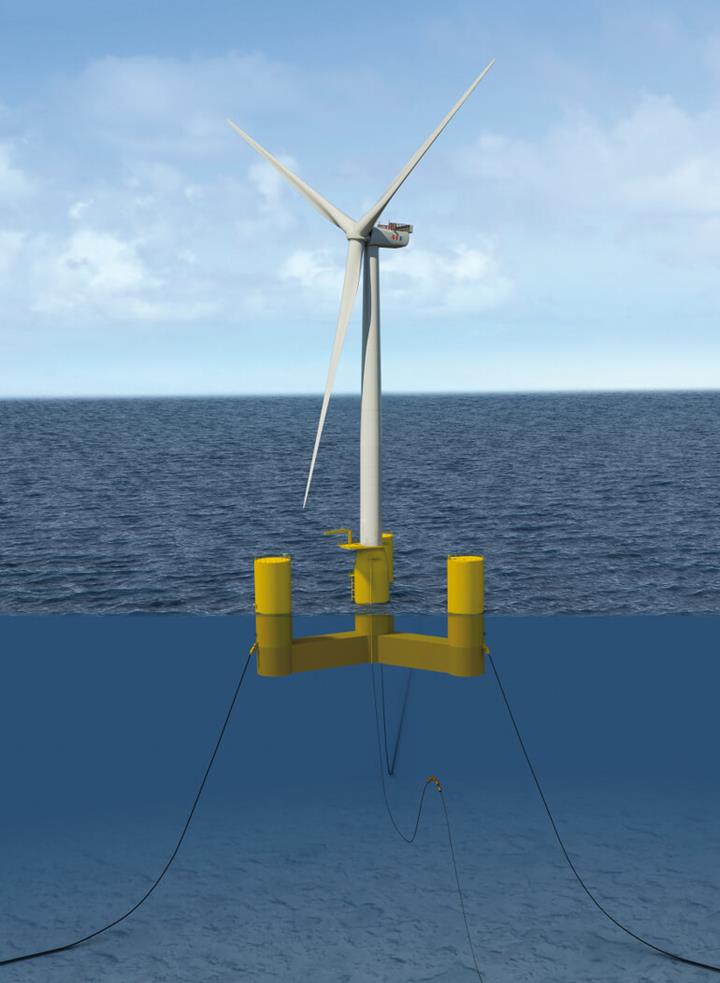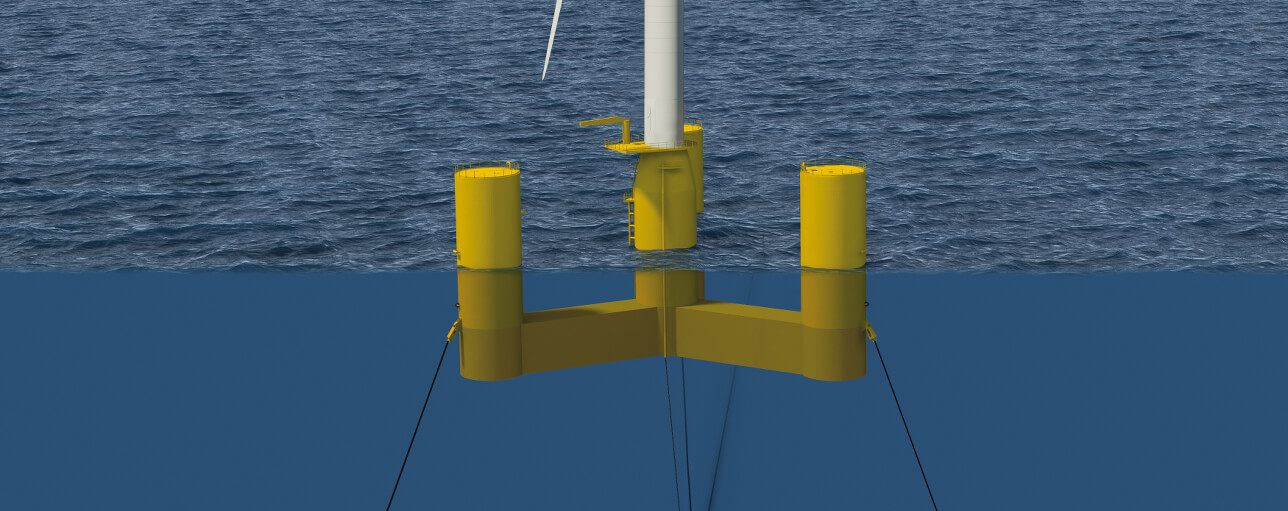DNV GL has certified Naval Energies’ floater design basis applicable for the Groix & Belle-Ile wind farm and their calculation and design methods applicable for their floater in general.

HAMBURG, Germany - 8 October 2020 - DNV GL, has approved Naval Energies’ documentation package for design briefs by confirming their calculation and design methods are in line with the specified standards and recommended practices. Additionally, DNV GL also approved the floater design basis, specifically for the wind farm project in Groix & Belle-Ile.
Dr. Kim Mørk, Executive Vice President for Renewables Certification at DNV GL, said: “DNV GL is fully committed to and convinced that floating wind has the potential to make a significant contribution to the global energy transition. For such new and quickly growing technologies, certainty and risk minimalization are key and we are proud that our global expertise contributes to the commercialization of floating wind by reducing risk factors for all players in a project by certification.”
Laurent Schneider-Maunoury, President of Naval Energies, said: "Our objective is to produce, for the pilot farm of Groix & Belle-Île, of which we are partners, but also for future commercial farms in France and worldwide, a floater with the highest standards combining quality, durability and of course technical and economic performance. This certification issued by an independent body like DNV GL is a major step forward.”
DNV GL’s comprehensive certification delivers maximum stakeholder confidence for this important emerging technology. DNV GL’s detailed assessment for this project consisted of an overall basis for design and calculation methods related to hydrodynamics, structure, anchoring, and tank test campaigns. It resulted in an approval documented in a certification report of the calculation and design method applicable for Naval Energies’ semi-submersible floater and a Statement of Conformity for the floater design basis.
Leading on standard development for offshore wind in general, and floating wind, DNV GL has taken a leading position on developing requirements for floating wind turbine structures. Inspired by the first full-scale turbine, Hywind Demo, DNV GL issued its first guideline in 2009. Building on experience from prototypes and research projects and learnings from the world’s first floating wind farm, Hywind Scotland, a new update was initiated and formed the DNV GL-ST-0119 standard issued in 2018. Some of the key updates included optimized safety factors in fatigue, specific load cases related to loss of mooring lines and aspects related to shared anchoring, and the motion control system. A further update of the standards is planned for early 2021.
The role of offshore wind and floating offshore wind energy is expected to grow significantly over the coming decades. In its recently published Energy Transition Outlook report, DNV GL forecasts a growth of 100 MW today, to more than 10 GW in 2030, and 250 GW in 2050. Floating offshore wind will be an exciting new market in the future with 250 GW installed producing 2% of global power in 2050.


